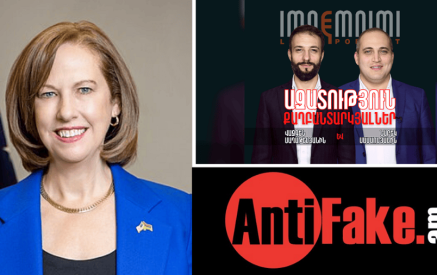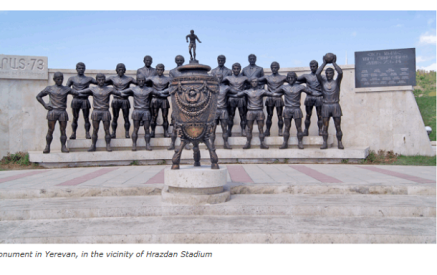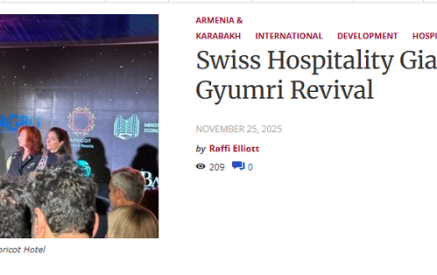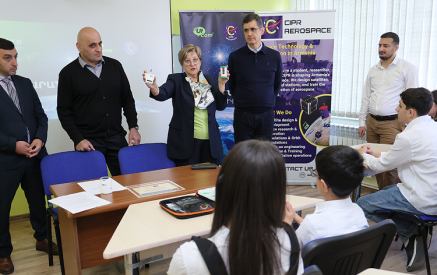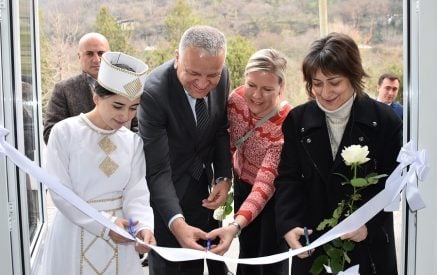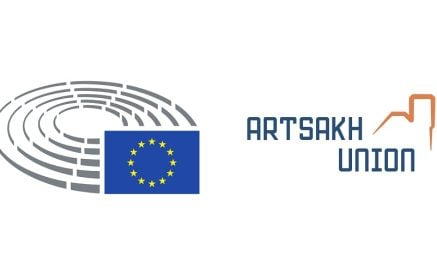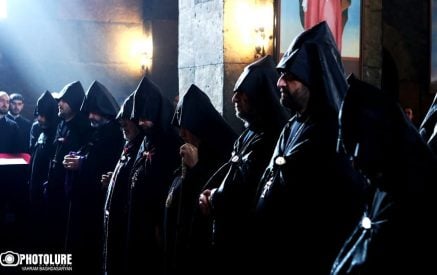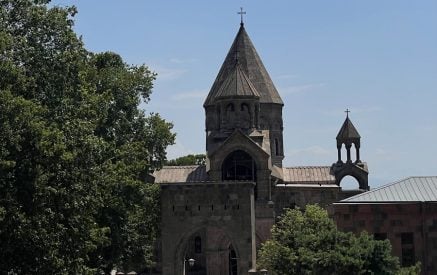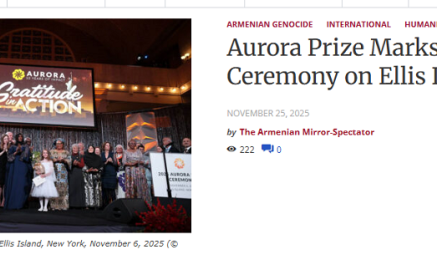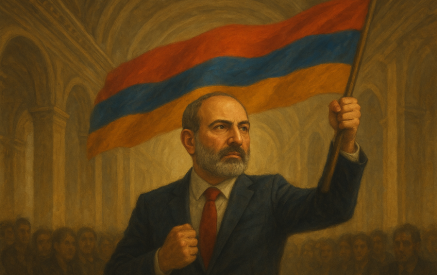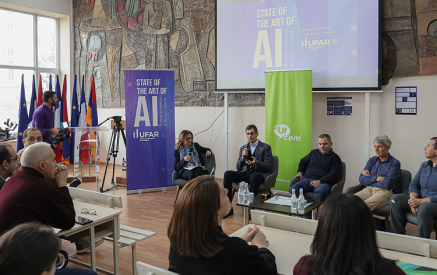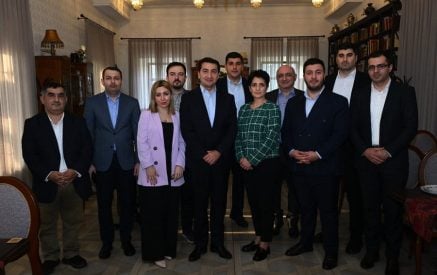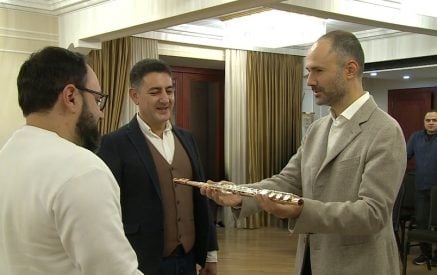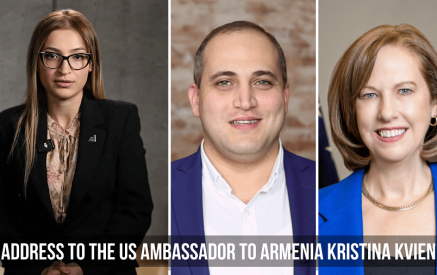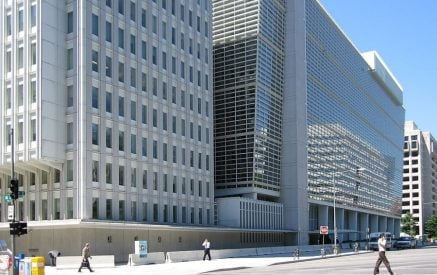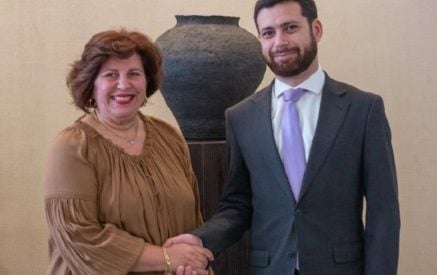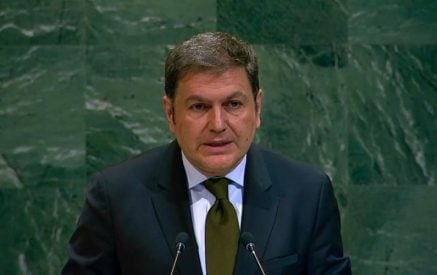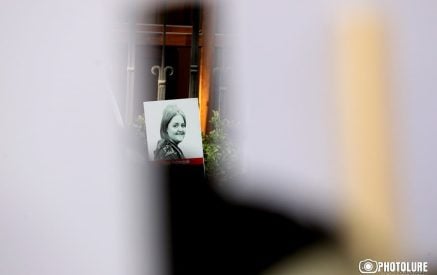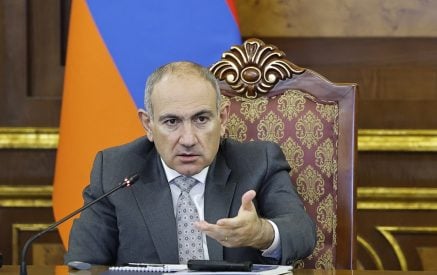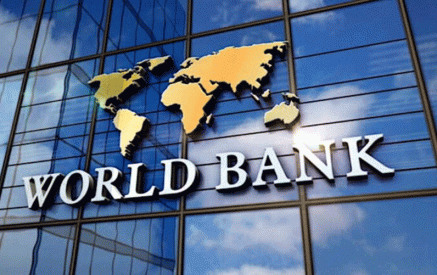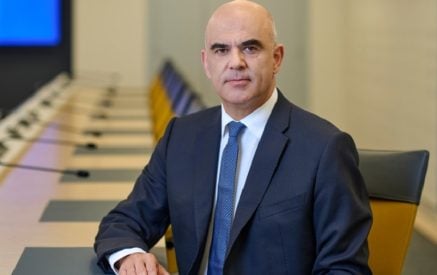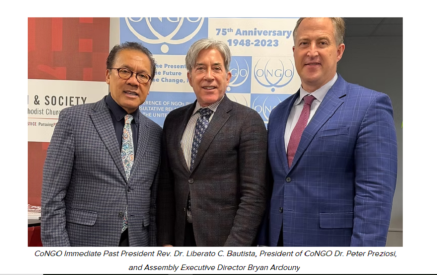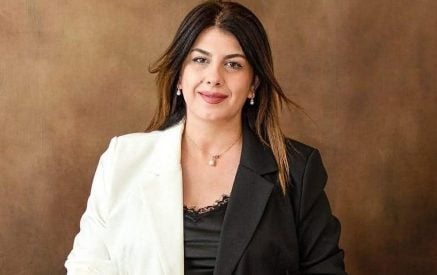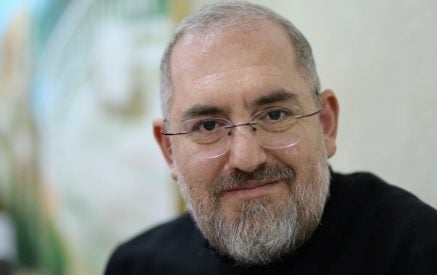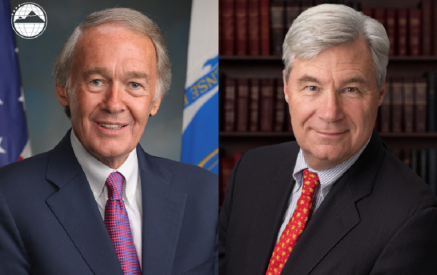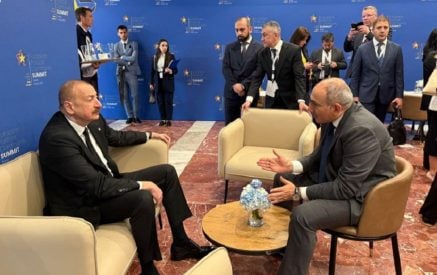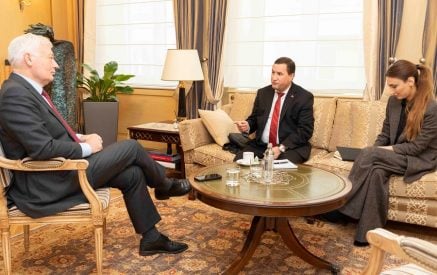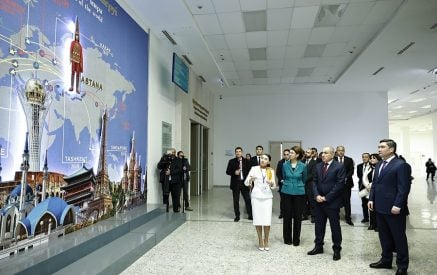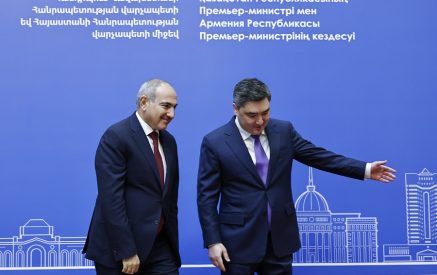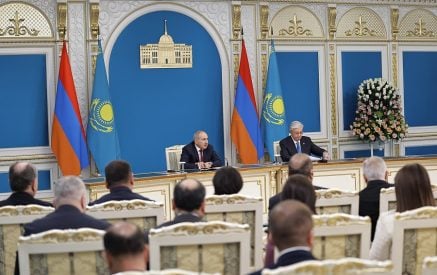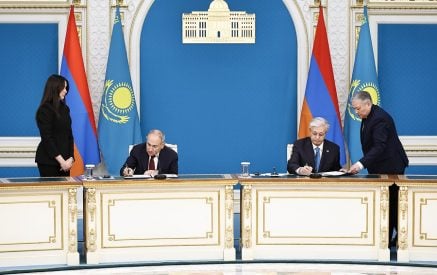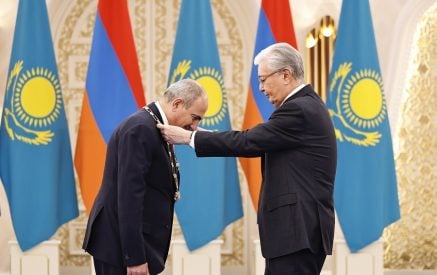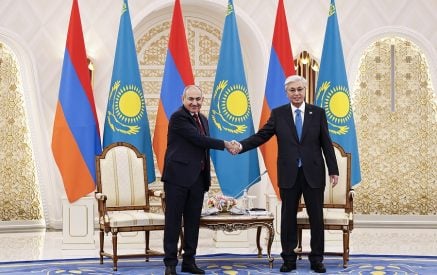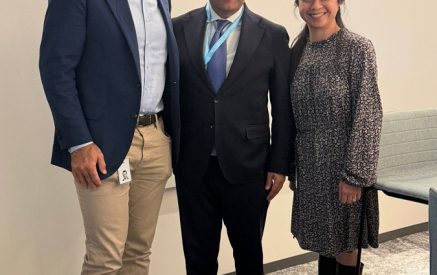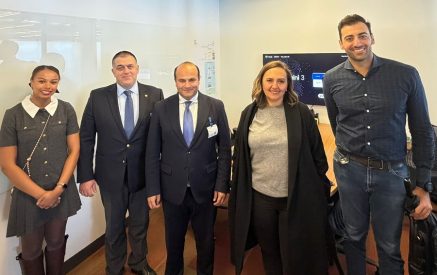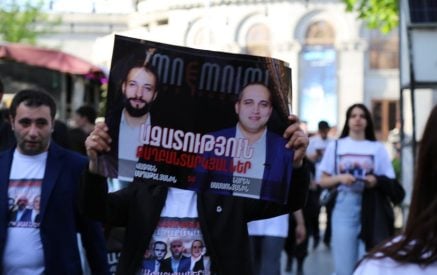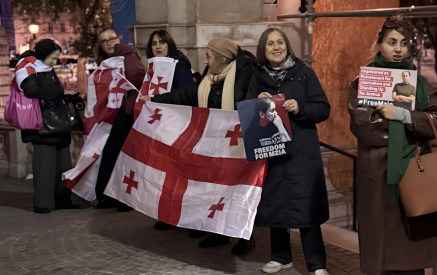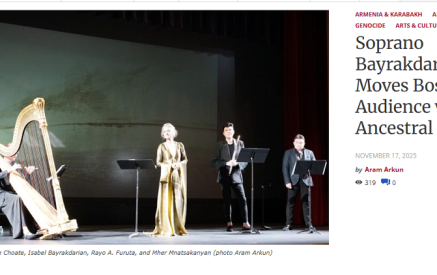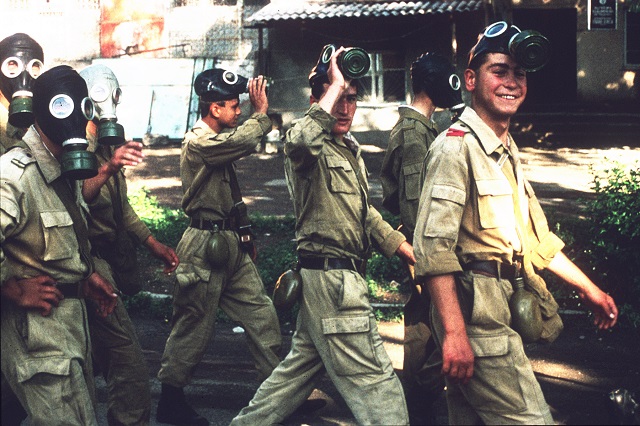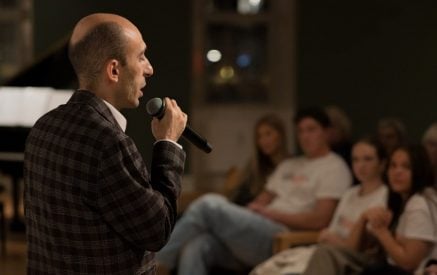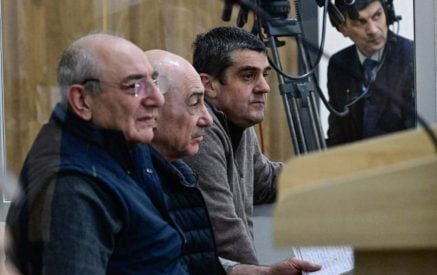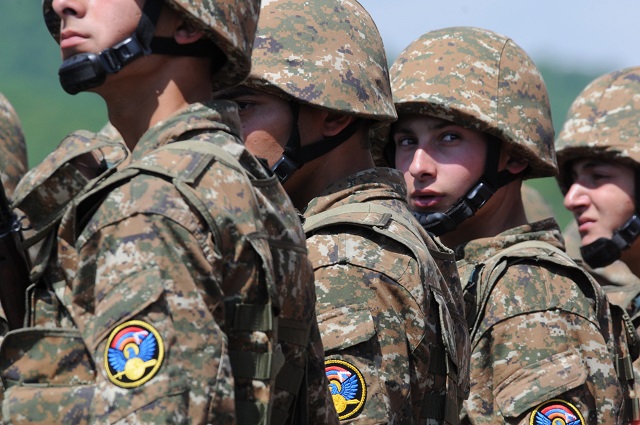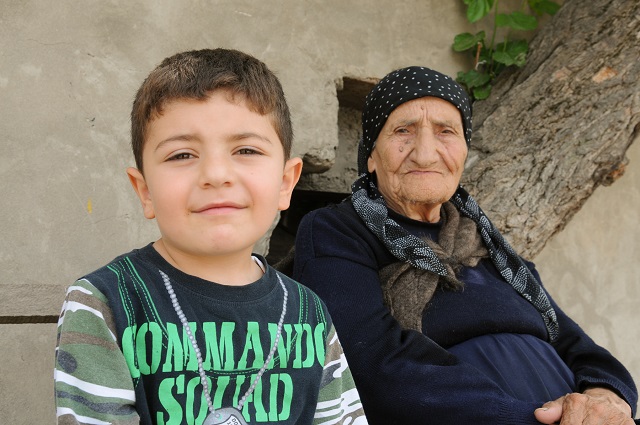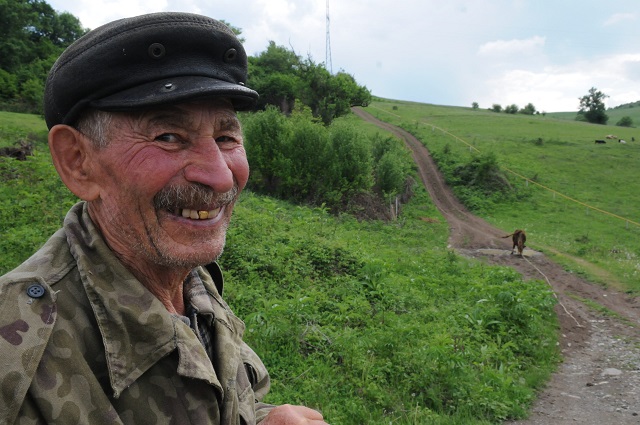The Armenian Weekly. I had just arrived in Artsakh in the summer of 1995, when I heard the distinctive sound of soldiers marching behind me.
As I turned around, a group of fresh-faced soldiers marched past me and toward the center of Stepanakert—Artsakh’s capital city. The soldiers appeared to be training for a chemical weapon attack. But their gas masks didn’t shock me. Instead, I was stunned by their apparent youth.
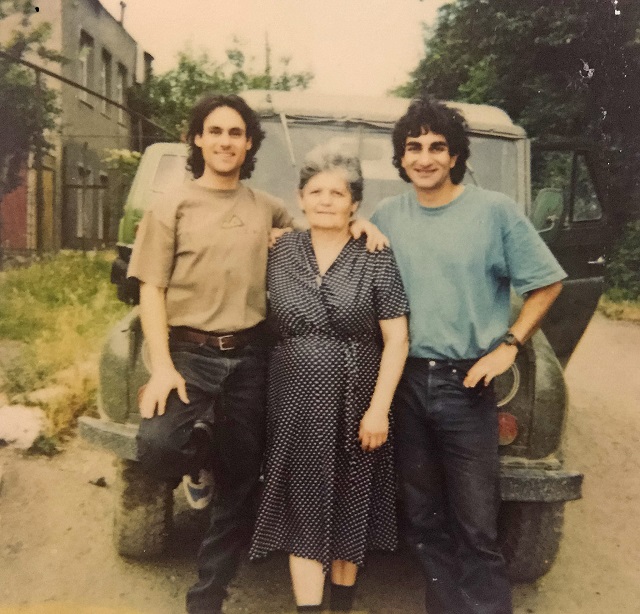
Author Matthew Karanian (right) with Nora Babayan (center) and Robert Kurkjian in Stepanakert during their research about Armenia and Artsakh in 1995.
I’ve made dozens of trips to Artsakh since then, and I’ve observed a lot of progress in the country.
But after 25 years, there’s still been no improvement in Artsakh’s prospects for a just and lasting peace. Artsakh is still at war against an aggressor that denies Artsakh’s right to exist.
Read also
And so it is fitting that each year, the people of Artsakh publicly celebrate their existence, and commemorate another year of self-determination.
These photos show some of the scenes that I have observed, beginning in 1995, when I have joined the people of Artsakh in these commemorations of democracy.
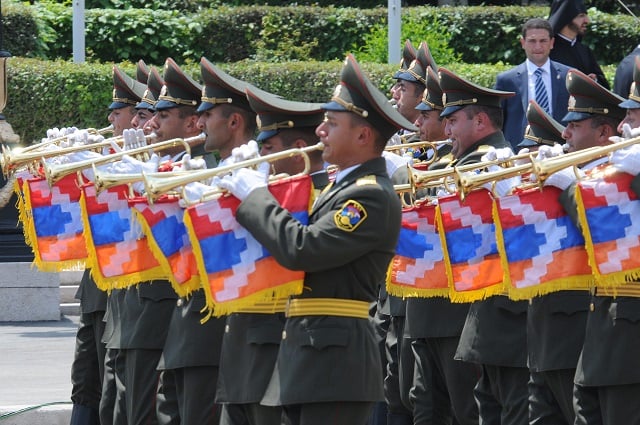
Shushi Liberation Day Parade, Stepanakert. Photo (c) 2020 Matthew Karanian Central Square of Shushi on Liberation Day. Photo (c) 2020 Matthew Karanian
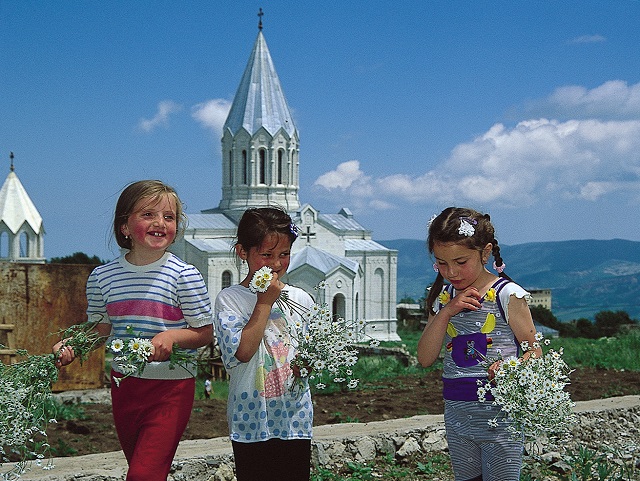
Girls gathering flowers near the church yard of Ghazenchetsots Cathedral in Shushi. Photo (c) 2020 Robert Kurkjian
Matthew Karanian
Main caption: Author Matthew Karanian encountered a platoon of Artsakh soldiers on patrol in central Stepanakert in 1995. Photo (c) 2020 Matthew Karanian


